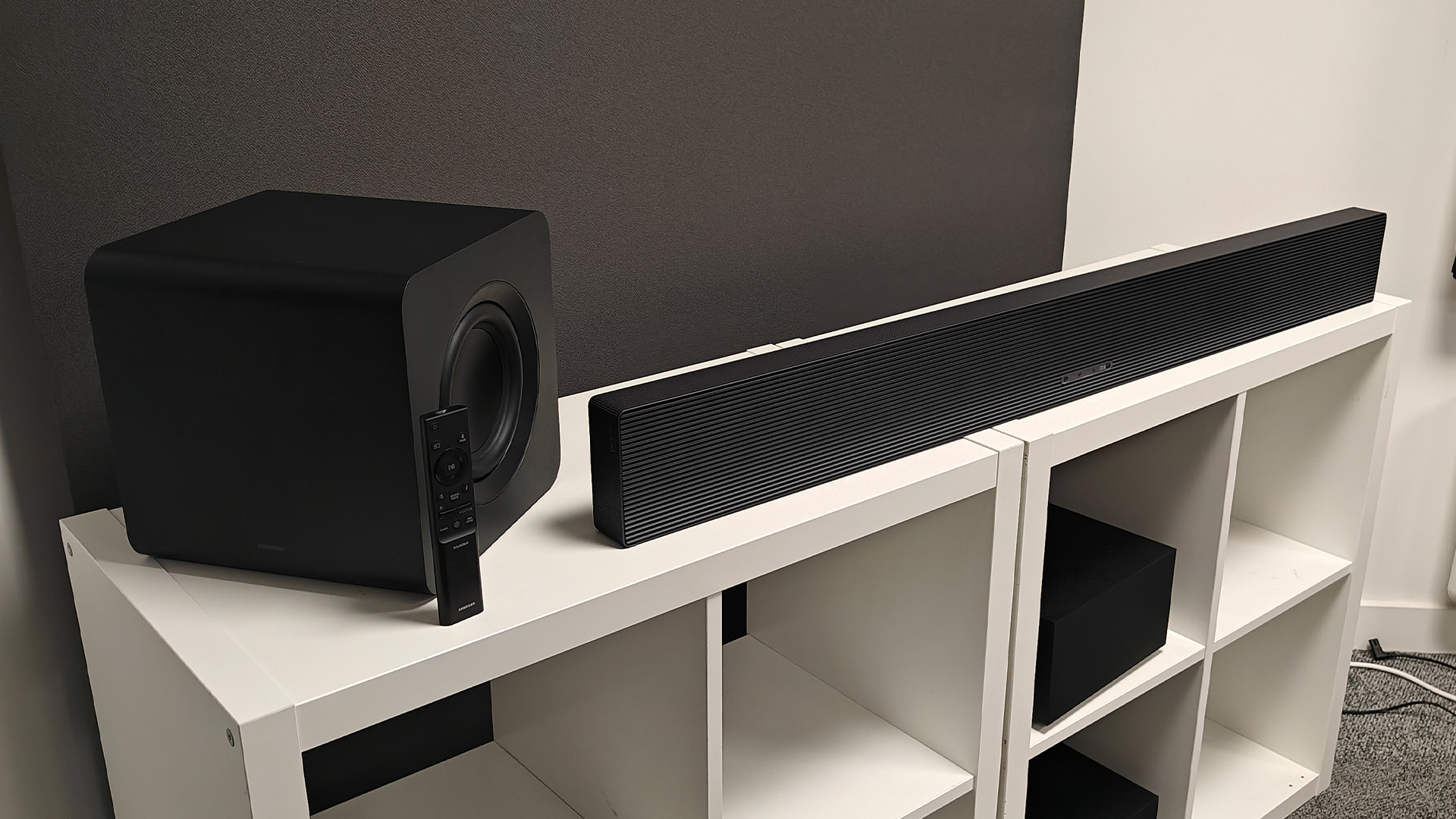Xiaomi unveils ludicrous transparent OLED TV – and it's actually going on sale
'Not a TV, but a piece of art'

We'll get straight to it: Mi TV Lux Transparent Edition is the world’s first mass-production transparent TV. With an edge-to-edge transparent self-luminous display, it transmits images that, according to its makers, "seem to be suspended in the air".
Love or loathe that idea, the TV does usher in a new way to consume content at home – one many viewers have seen only in science fiction films until now.
When the Mi TV Lux Transparent Edition is turned off, it looks just like a glass display. And, unlike traditional TVs that house their processors and connections in a back panel, the Mi TV Lux Transparent Edition cleverly houses all of these in its circular base stand.
Aside from the futuristic design, Mi TV Lux Transparent Edition boasts some flagship-level hardware too. The 55-in transparent OLED panel features a claimed 150000:1 static contrast ratio and an infinite dynamic contrast ratio. Its 10-bit panel apparently displays 1.07 billion colours – far beyond what the human eye can actually perceive.
The TV comes with a 120Hz refresh rate and 120Hz MEMC technology too, for clearer motion and low latency gaming.

Drilling down a little further, the Mi TV Lux Transparent Edition is also equipped with an AI Master Smart Engine and a MediaTek 9650 custom-made TV chip. It uses over 20 algorithms and dedicated optimisation for five different use scenarios to create the best possible picture.
In the sound department, the TV also supports AI Master for Audio, allowing it to detect the type of content playing and choose a fitting audio mode from a list spanning movies, music, newsfeed, sports, and others. Naturally, there's Dolby Atmos support onboard as well.
The latest hi-fi, home cinema and tech news, reviews, buying advice and deals, direct to your inbox.
Xiaomi, which is currently celebrating its 10th anniversary, claims the new product is "not a TV, but an art piece" with a design that combines a 5.7mm rectangular transparent screen and a round base. The base stand is apparently covered with a "millimetre-grade finish that resembles compact discs" too, in a bid to better blend into its surroundings.
Mi TV Lux Transparent Edition runs on a custom-made user interface called MIUI for TV, meaning that the home page, settings, and My App are all specifically designed to better demonstrate the visual features and strength of its transparent screen. The operating system also supports Always-On, which allows users to customise display images and text when not actually watching their favourite shows.
You'll need pretty deep pockets, though. The Mi TV Lux Transparent Edition is only available in the 55-in model, priced at RMB 49,999 (approx. £5,500/$7,200/AU$10,100).
Official sales start at 10am on the 16th August in Beijing (3pm BST, 10pm ET) – when there's official pricing for the UK, US and Australia, we'll let you know.
MORE:
Best OLED TV 2020: the best budget and premium OLED TVs
What Hi-Fi?, founded in 1976, is the world's leading independent guide to buying and owning hi-fi and home entertainment products. Our comprehensive tests help you buy the very best for your money, with our advice sections giving you step-by-step information on how to get even more from your music and movies. Everything is tested by our dedicated team of in-house reviewers in our custom-built test rooms in London, Reading and Bath. Our coveted five-star rating and Awards are recognised all over the world as the ultimate seal of approval, so you can buy with absolute confidence.

